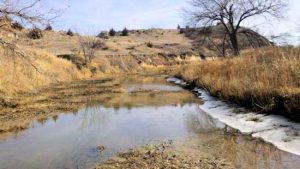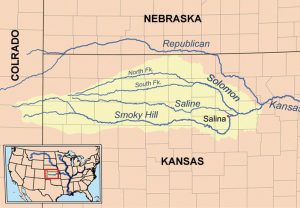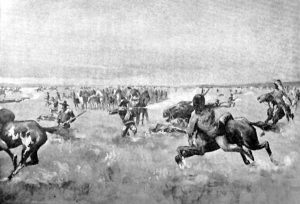The Saline River, the principal tributary of the Smoky Hill River, is 397 miles long and lies entirely within northwest Kansas. The river takes its name from the French translation of its Native American name, Ne Miskua, referring to its salty content.
Originating in the High Plains of northwestern Kansas, there are two forks — the south fork beginning near the Sherman County-Thomas County line and the north fork rising in central Thomas County. The two forks meet in Sheridan County, about five miles northwest of Grinnell, forming a sluggish and navigable riverbed of sand and mud.
From here, the river flows east through the Smoky Hills region of north-central Kansas and joins the Smoky Hill River approximately one mile south of New Cambria, Kansas, in Saline County.
The first recorded reference to the river was in October 1724, when French explorer Etienne Venyard de Bourgmont was on his way to negotiate a peace treaty with the Padouca, whose “Grand Village” was then located on the Saline’s banks. At that time, he reported finding a “small river where the water was briny.”
Eight decades later, in 1806, an American expedition led by Zebulon Pike crossed the river to visit the Pawnee tribe. By 1817, the river was known as the “Grand Saline.”
The Pawnee and the Kanza tribes, who had long used the area as hunting and trapping ground, claimed land along the Saline River until the 1850s when American settlers began to arrive.
In August 1867, Cheyenne warriors massacred a party of railroad workers in Ellis County. This incident led to a battle between the Cheyenne and Buffalo Soldiers from Fort Hays that became known as the “Battle of the Saline River.”
The Saline River flooded periodically during the late 19th and early 20th centuries. In 1964, the U.S. Army Corps of Engineers dammed the river in eastern Russell County for flood control, creating Wilson Lake.
Compiled by Kathy Alexander/Legends of Kansas, updated August 2023.
Also See:



